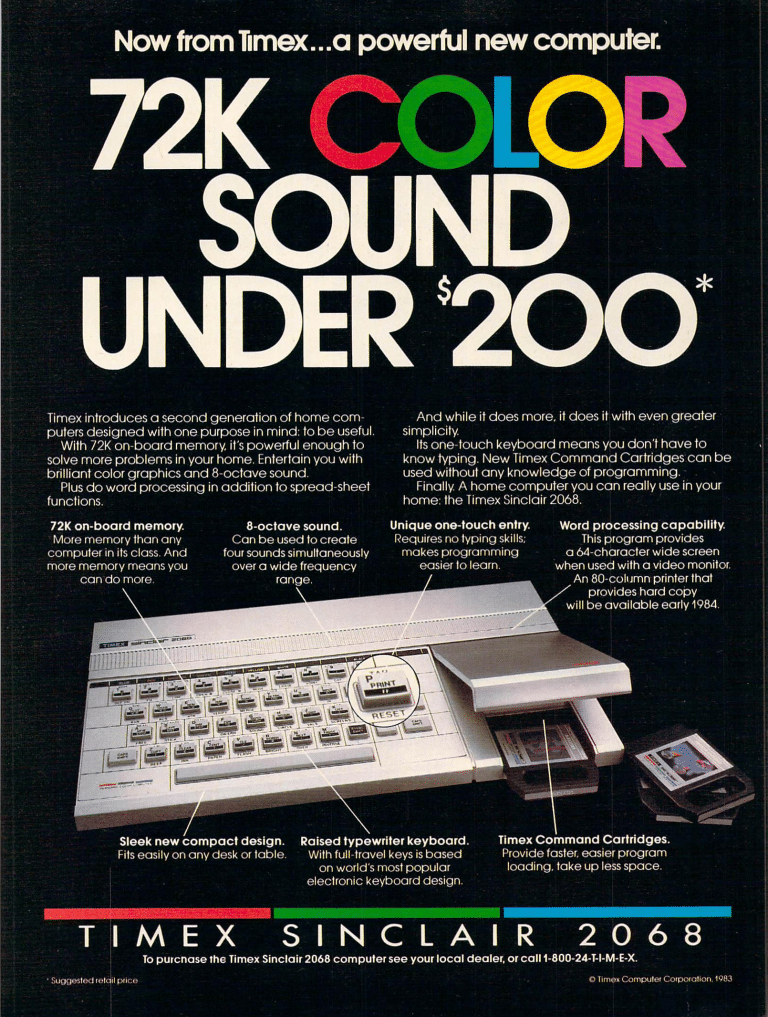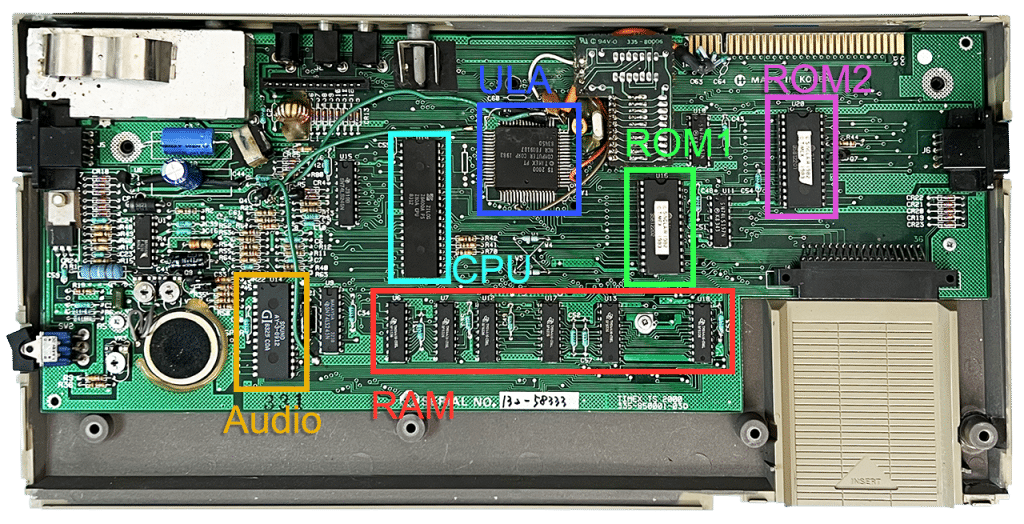

Production: 1983
OS: Sinclair Basic
TIMEX 2068
What is Timex 2068? A clone? Well there are so many clones of the classic ZX Spectrum.
This is an official product of Timex that collaborated with Sinclair to sell its products in the States, it is an upgrade of the 48k version but adding an audio chip (AY-3-8912) with an internal speaker, a cartridge holder, an output RCA and 2 joystick ports, as well as an improved resolution and an extended color mode.
Later the audio chip was also used on the ZX Spectrum 128K and higher versions.
All these changes introduced made this computer incompatible with the software written for the Spectrum and to remedy this an emulation cartridge was produced that made it possible to load programs written for the Spectrum, obviously in this mode it was no longer possible to benefit from the upgrades introduced in this model.
The keyboard also underwent a small improvement by introducing plastic keys and no longer a rubber, despite having an internal membrane. Same thing for the Basic commands that in this computer 6 more were introduced.
This was the last computer produced by Timex before leaving this market and the end of this project was also determined by a fierce competition in those years.
Timex 2068 commercial
One thing that makes you smile is that this computer was advertised as a 72K model!
in realtà la memoria utente era sempre 48K come lo ZX Spectrum, ma per pompare un pò questo numero hanno considerato anche i Kb delle ROM 🙂
The computer had to be cheap and the price was launched at $199 as a bargain ... too bad that shortly after the Commodore greatly lowered the price of its top models and for the same amount you bought a C64 with thousands of software already available and with better features.

For the rest, the characteristics are those of the Spectrum, despite a more comfortable keyboard for typing, the automatic command writing system was left, by pressing a key at the start of the command it was entered directly on the screen, a bit like the T9 in mobile phones.
The colors were 8 but thanks to the possibility of being able to manage 1 level of brightness (except on black) it reached 15 shades of color.
Like the Spectrum, it did not have the ability to manage sprites, even if the extended color mode allowed to insert a different color in each cell composed of 8x1pixel compared to the standard (square) one of 8 × 8 pixels.
The sound is finally managed by a dedicated integrated which is capable of playing 3 voices and the audio was produced by an internal speaker (no longer a buzer as in the Spectrum).

The rear doors as seen above are:
Power: used to connect the 15V DC power supply, use a classic barrel with external positive
MIC / EAR: to connect a recorder and be able to load and save programs (the entry for a possible TZXDuino is EAR)
MONITOR: it is a composite video output for connecting a TV / monitor
RF: it is a TV output often used in those years (not visible in the picture but it is more to the right of the power connector)
Transforming 2068 into ZX Spectrum
This is the layout of the components inside the computer, and as you can see in the upper right there are 2 ROMs.
There are 2 ways to turn this computer into ZX Spectrum:
1) Through the cartridge to be inserted containing the emulator.
Obviously, this must be inserted with the computer off and once it is turned on, it is necessary to type the command OUT 244,3 to restart the machine in Spectrum emulator mode
2) Changing the ROM1 with the ROM of the Spectrum.
By replacing this memory with that of a ZX, the game is done, it is also possible to write a more recent Eprom (type 27256) with the data from the Spectrum ROM.
In the video I tested both solutions to see how they work and was able to load a game for the ZX in both modes


